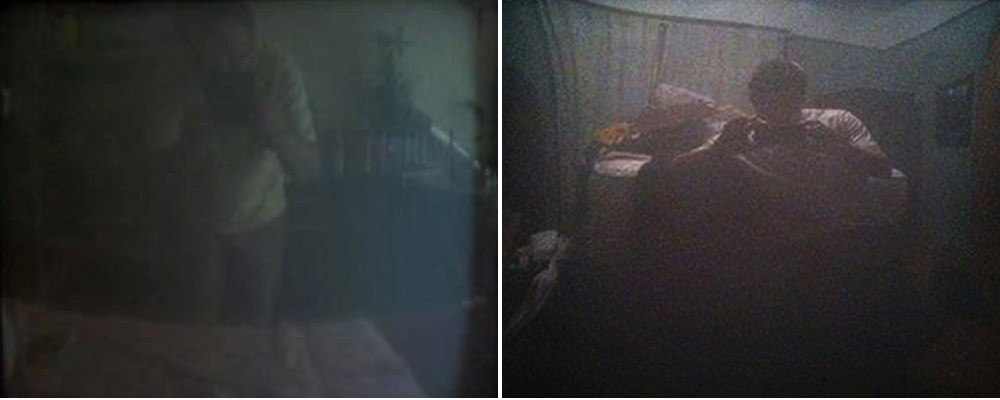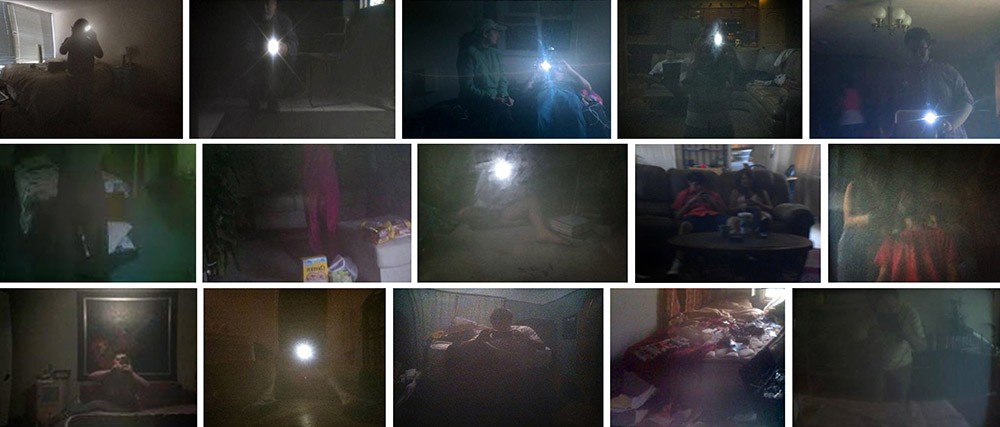
TVs from Craigslist are images of the screens of TVs for sale I’ve found on Craigslist. I download the images, crop all but the screen, and enlarge and make c-prints to the scale of the TV. With hints of the seller’s interior space reflected in them, they offer inadvertent glimpses of intimacy and function as self-portraits of the sellers. Interestingly, as smart-phone technology gets better, and sellers are able to take pictures without using flash, I find more revealing details in the images.
Although these images are purely utilitarian, taken only to sell a TV, they all have embedded in them the subjectivity and individuality of the photographer/seller. The inadvertent reflections of the sellers become the subject within the dark screens of their unwanted used-TV’s for sale. I find gestures of intimate and private exposure, various states of undress, unmade beds, dirty laundry – all accessible to an entirely anonymous public.
The source images that these prints come from are very small: it’s likely that the seller has no idea that he or she is pictured there. But thinking about the promise, and ultimate absence, of intimacy that the internet fosters, I can’t help thinking there’s a subconscious undercurrent of exhibitionism here; a plea for attention.
Going from city to city on Craigslist in search of TVs has become a somewhat voyeuristic proceeding. It’s like I’m invited into people’s living-rooms and bedrooms to look at the TV they want to sell and there they are, with unmade bed, sometimes completely naked, reflected in the surface of a TV they no longer want. It’s sad really – at one time the center of the family room, now rejected, the last picture of the TV that will exist holds on to a little ghostly image of its owner…. Or, the ghostly image is forever stuck in the machine its owner doesn’t want.

TV from Craigslist, 2008, digital mock-up for variable sizes of c-prints on metallic paper

During an exhibition of TVs from Craigslist I upload the images to Craigslist listing them under the heading “TVs for sale”. For each image, I make an edition of two, the first edition is available for purchase on Craigslist for the price of the original TV (ranging anywhere from $10-$300). The second edition becomes available for purchase at gallery prices after the Craigslist edition is sold. In utilizing the public domain both for its content and its context, the sale of the edition addresses issues of exchange: how differently a piece works on the internet than it does in real time/space, and what happens to the perceived value of a work, and its meaning, when it is transcribed from web-based media to print-based media, and visa-versa. The juxtaposition of the art market with a consumer market engages an unsuspecting consumer public and asks it to consider the value of an art object (made from its own visual vocabulary) to be as worthy of their attention as the consumer object they hope to acquire. And it asks an informed art buying audience to engage a utilitarian platform and consider a thing made form a familiar consumer object to be worthy of value.


TV from Craigslist, 2011
C-prints on metallic paper
Each 11” x variable widths
Installation view at Pace Gallery, NY, 2011
Individual images from TVs from Craigslist:
